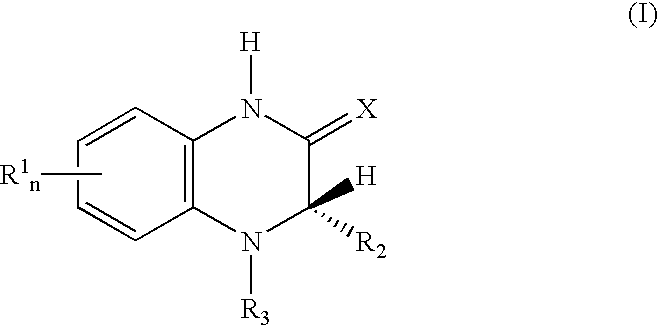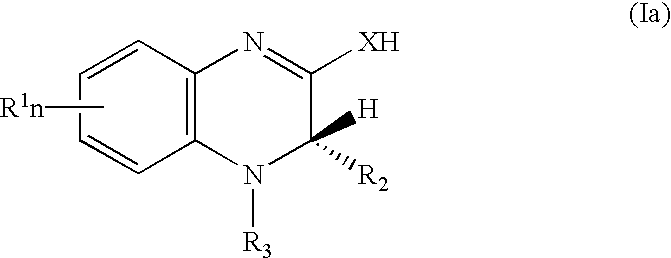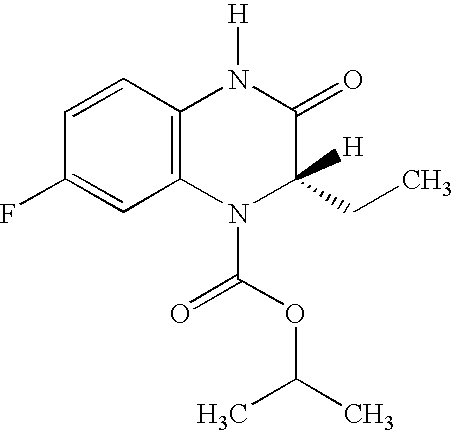Quinoxaline containing medicaments for post exposure prophylaxis of an HIV infection
a technology of hiv infection and quinoxaline, which is applied in the direction of biocide, heterocyclic compound active ingredients, peptide/protein ingredients, etc., can solve the problems of insufficient comparative data, inability to start a therapy, and inability to adequately evaluate the efficacy of seroconversion vaccination, so as to optimize the primary immunological control of infection, improve the prophylaxis, and improve the effect of anti-infectious
- Summary
- Abstract
- Description
- Claims
- Application Information
AI Technical Summary
Benefits of technology
Problems solved by technology
Method used
Image
Examples
example
[0077] The following example shows the post-exposure prophylaxis with (3S)-ethyl-6-fluoro-4-isopropyloxycarbonyl-3,4-dihydroquinoxalin-2(1H)-on-e (hereinafter COMPOUND A) in rhesus monkeys.
[0078] Methods
[0079] Preparation of Virus RT-SHIV:
[0080] The virus used in the experiments is a chimeric simian-human immunodeficiency virus (SHIV) that consists of SIVmac239 virus genome with replacement of reverse transcriptase gene (RT) by the corresponding HIV-1 RT gene (Ueberla, K. et al (1995), Medical Sciences 92, 8210-5214). RT-SHIV induced AIDS in experimentally infected rhesus monkeys (Ueberla, loc.cit.). Proviral RT-SHIV DNA was prepared by ligation of RT-SHIV5' and 3' half of SIVmac239. COS-1 virus stocks were prepared by DNA transfection of proviral DNA. Virus stocks for efficacy experiments were prepared by propagation of COS-1 virus stock in rhesus monkey peripheral blood lymphocytes (PBL). P27 antigen concentration of the virus stocks was determined with a commercial SIV gag antige...
PUM
| Property | Measurement | Unit |
|---|---|---|
| Time | aaaaa | aaaaa |
| Time | aaaaa | aaaaa |
| Time | aaaaa | aaaaa |
Abstract
Description
Claims
Application Information
 Login to View More
Login to View More - R&D
- Intellectual Property
- Life Sciences
- Materials
- Tech Scout
- Unparalleled Data Quality
- Higher Quality Content
- 60% Fewer Hallucinations
Browse by: Latest US Patents, China's latest patents, Technical Efficacy Thesaurus, Application Domain, Technology Topic, Popular Technical Reports.
© 2025 PatSnap. All rights reserved.Legal|Privacy policy|Modern Slavery Act Transparency Statement|Sitemap|About US| Contact US: help@patsnap.com



